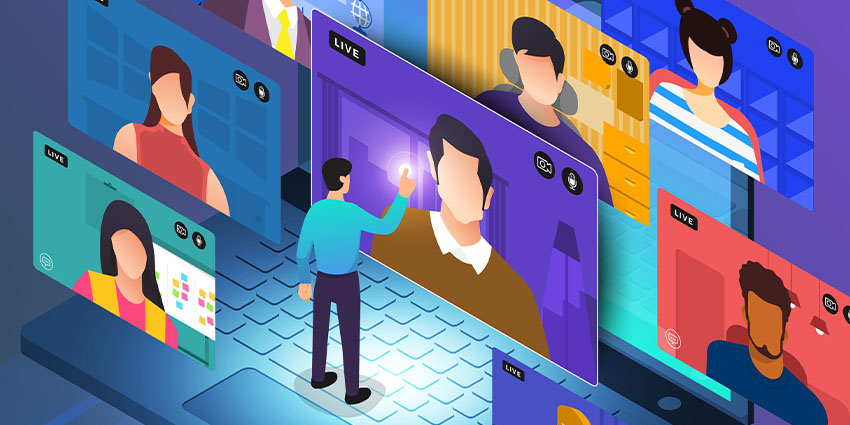What does a great meeting look like? Is it one where everyone has their cameras on, and people feel like part of the team? Is it the kind of meeting that leaves your staff informed and motivated?
As the workforce evolves, we’re still looking for the perfect meeting experience, and there are a lot of challenges to overcome on the way.
Schedule a virtual meeting today, and the chances are you’ll deal with problems like availability issues, calculating time zones, and making sure everyone’s comfortable with the same software or meeting room. Often, we get so caught up worrying about the components of the virtual meeting, from camera choices, to schedule times, that we forget the true purpose of the meeting.
So, what are meetings for?
Are they a way to communicate, share ideas, or collaborate? Should we be launching video conversations to set plans and agree actions?
Meetings: What Are They Good For?
Since the events of 2020, it often feels as though people are scheduling meetings almost on autopilot.
Too many meetings are scheduled on gut instinct, with no real purpose or agenda behind them. The result is vague conversations between staff members, where time is wasted, and you’re left wondering why you bothered in the first place
Meetings should be efficient and convenient. If McDonalds made meetings instead of hamburgers, what kind of experience would we expect? Something fast, simple, and easy to access.
The ingredients of a great meeting are simple enough:
- First: you should be able to launch meetings from all of your workflow apps. It should be consistent, easy to use and reliable
- Second: you need to be able to locate participants easily, rather than trudging through email directories and copy/pasting addresses
- Third: you need to integrate an easy, open-standards meeting platform – something that allows people to connect however they choose
- Four: you should have video – compulsory video. It’s 2021, and video is the new voice. If you’re not willing to get on camera, you’re not sending the right message
Enhancing the Meeting Experience
Meetings need to be well-designed, well-aligned, and well-planned. Ideally, your technology will help with many the tougher stuff, like framing participants automatically (AI can assist with this). This ensures that people aren’t half active on-screen.
The purpose of the meeting needs to be clear too. Define this before the conversation begins. Show a form or meeting wizard with some simple questions to anyone who starts setting up a meeting. Those questions might include:
- What’s the reason for this meeting?
- What’s the ideal outcome?
- What discussion points need to be considered in advance?
- Will follow-up meetings be necessary, and when?
- Is this video-only, or will shared information and presentations be available?
- If information is being shared, can you add files for easier access?
Think about the guidelines you’ll put in place if someone needs to reschedule too. The meeting service should have a digital assistant or bot that can help to find availability by examining the calendars of multiple users for you. If something changes, the bot should automate the change for everyone involved. Open calendar APIs and AI will help with this.
Should In-Meeting Experiences be Better?
It’s not just the right preparation that impacts the quality of a meeting. The platforms we use need to be more intuitive too. Fortunately, we’re seeing the impending arrival of new capabilities, like:
- Real-time subtitles and captioning
- Real-time translation for multilingual meetings
- Safety, security, and compliance features
- People insights (context around the people in the room, such as social posts)
- Timekeeping (is the meeting running as scheduled?)
- Actions (a bot can identify agreed actions and create a roundup for all attendees)
- Sentiment (how was the mood in the meeting?)
- Issues (Do any problems need to be raised with the organiser or attendees?)
- Productivity (How effective was the meeting, were the goals achieved?)
Email, calendar, and meeting platforms need to align to make meetings more efficient and productive. Technology has the potential to transform the way we meet in a positive way. However, there’s work to do. The good news is that R&D dollars are going heavily into video and collaboration platforms right now. The downside is that some tools like Outlook and Gmail seem slow to evolve.
Perhaps Microsoft (Teams), or Zoom will reinvent calendars and email one day, and we’ll all be better off for it.
Perhaps the most interesting question here is, who is responsible for improving the meeting experience? Just because we use Outlook for email doesn’t necessarily mean we should use Outlook Calendar for scheduling meetings. Does a meeting platform need to take more responsibility?







